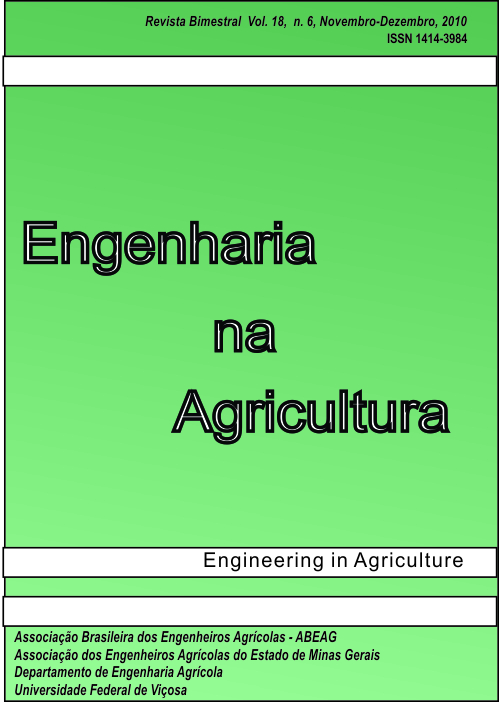INTERPOLATION METHODS OF THE PARAMETERS OF THE INTENSE RAIN EQUATION IN ESPIRITO SANTO STATE
DOI:
https://doi.org/10.13083/reveng.v18i6.85Keywords:
precipitação pluviomêtrica, modelagem hidrológica, escoamento superficialAbstract
This work has the objective of evaluating the interpolation of the parameters of the intense rain equation, by the inverse method of one potency of the distance, using five different potencies and comparing all with the close neighbors method of the Espírito Santo state. The interpolation of parameters “K”, “a”, “b” and “c” of the equation for intense rain was carried through, using the inverse interpolator of one potency of the distance with five different potencies, being: potency 1, 2, 3, 4 and 5 and the close neighbors interpolator. Considering all the possible combinations between the periods of return (T) equals 2, 5, 10, 20, 50, and 100 years and the precipitation duration (t) equals 10, 20, 30, 40, 50, 60, 120, 240, 360, 720 and 1440 minutes, totalizing 66 combinations for each one of the 20 stations. In ownership of the parameters interpolated of each one of the stations, the values of the average maximum precipitation intensity had been calculated (im), by means of the intense rain equation. Using the calculated values of im and the interpolated ones, the percentage of average error. To finish, an analyzes of regression of the data was proceeded, correlating the average error percentage with the different potencies. The closest neighbor method provided an average error of 7,03% and for the method of the inverse of a potency of the distance a value of 16, 4% of average error. Being thus, the closest neighbor method had better resulted for the interpolation of the parameters of the intense rain equation specifically for the state of Espirito Santo.Downloads
Downloads
Published
How to Cite
Issue
Section
License
Authors who publish with this journal agree to the following terms:
The author(s) authorize(s) the publication of the text in the journal;
The author(s) ensure(s) that the contribution is original and unpublished and that it is not in the process of evaluation by another journal;
The journal is not responsible for the views, ideas and concepts presented in articles, and these are the sole responsibility of the author(s);
The publishers reserve the right to make textual adjustments and adapt texts to meet with publication standards.
From submission, the author is fully conceding the paper's patrimonial rights to the publication, but retaining the owner of its moral rights (authorship and paper's identification) according to Creative Commons Attribution-Noncommercial.








 Licensed by
Licensed by 